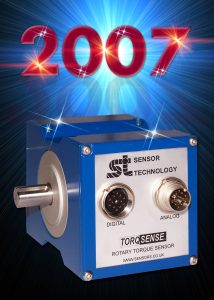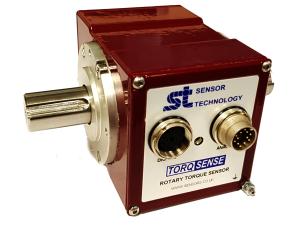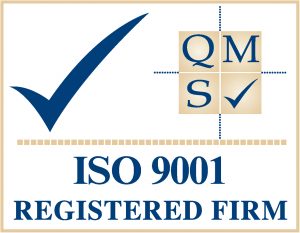Total solutions for non-contact torque measurement can be seen on Sensor Technology’s stand at the 2007 M-Tec exhibition.
The RWT310/320 series of TorqSense Rotary Torque Sensors is now available in a full range of sizes from 1Nm to 10,000Nm, so can be applied to virtually any size of system where precise yet simple torque monitoring is required. And these are complemented by TorqView, a software programme that generates a virtual instrumentation display of the output from a TorqSense transducer that can be run on any computer.
TorqSense RWT310/320 provides non-co ntact measurement of torque, speed, power and position of rotating shafts, such as machine drives. It uses tiny piezo-ceramic combs fixed to the shaft that distort in proportion to the instantaneous torque level. These create data signals that are transmitted via a radio frequency coupling rather than by conventional but clumsy slip rings. Because piezo technology requires so little power, this is also supplied via the RF coupling.
ntact measurement of torque, speed, power and position of rotating shafts, such as machine drives. It uses tiny piezo-ceramic combs fixed to the shaft that distort in proportion to the instantaneous torque level. These create data signals that are transmitted via a radio frequency coupling rather than by conventional but clumsy slip rings. Because piezo technology requires so little power, this is also supplied via the RF coupling.
“Our smallest sensor may be used to measure say the precise dosing of fine chemicals and pharmaceuticals,” says Tony Ingham of Sensor Technology. “The largest can be on full scale test rigs used in the aerospace industries and other heavy duty industrial applications.”
Each sensor includes an on-board alphanumeric readout for data collection. However many users prefer to feed the data streams through to a PC for collection and analysis, which opens up the possibility of displaying the data on a full-sized screen. TorqView has fully configurable and scalable graphics modules, so that the information can be presented in a number of different formats including as discrete digital readouts, as analogue dials, as bar graphs, etc.
Data such as peak values, time-sequenced and time-stamped values, etc, can also be collected and stored in text files or spreadsheets and exported to other programmes for subsequent analysis. Text comments can be incorporated into the data, either using an auto-trigger function or discretely as the user requires.
User configurable inputs, such as 4-20mA signals from accelerometers allow complete customisation of TorqView for every application.
TorqView incorporates an auto-scaling function that allows it to recognise the individual transducer with which it is working by reading its serial number. This also allows it to confirm its latest re-calibration date and to check security settings relating to the individual user.
Written in LabVIEW, the industry standard for instrumentation programmes, TorqView can be run in a standalone mode or integrated into users’ own unique programmes. It runs on all the popular Operating Systems, such as Windows 2000 and Windows NT.
“Our TorqSense transducers redefine the ease with which it is possible to collect real-time performance data from machine drive shafts,” says Tony Ingham of Sensor Technology. “TorqView is the user friendly front end that opens up the technology to any users.”





